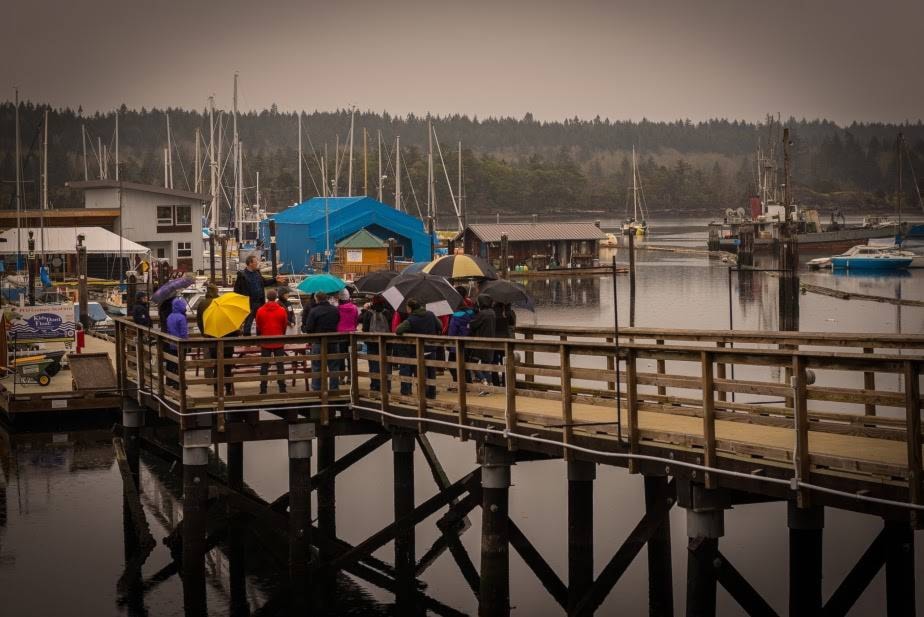A vision for the waterfront emphasizing inclusivity started to take shape last weekend as community leaders from Ladysmith and Stz’uminus First Nation sequestered at the high school for three days of brainstorming.
The 26-member Waterfront Plan Charrette is made up of citizens at-large, representatives from town commissions and organizations as well as six members of the Ladysmith and Stz’uminus councils.
Discussions got underway on Friday with presentations on contamination and the cost of cleanup, reflections on previous planning processes and a review of the hundreds of survey responses submitted from the public meeting at Aggie Hall.
On Saturday with umbrellas in hand, the team took a tour of Slack Point, the Machine Shop the Community Marina and walked around the area being studied.
Teams then split off into three groups but a theme emerged organically as everyone found that Ladysmith’s waterfront should reflect a collective ‘we’ as a community space.
On Sunday morning they broke off again into groups that where more localized in focus, including the uplands, Slack Point and the marina.
Mayor Aaron Stone said the tone of the conversation has shifted in recent months and years to one that warmly embraces Stz’uminus as a partner.
“I think this is being seen as beyond a community plan, or a restoration or economic development project and it’s about the future of our communities as one,” Stone said.
Stz’uminus Chief John Elliot echoed sentiments and said that it was a “successful weekend around relationship and partnership building.”
“No matter what happens in Ladysmith harbour it impacts us and the town and working together is probably the key to being successful to do what we need to do to clean it up,” he said. “Being part of the process from the start is the big thing and not coming in half way through.”
Now it’s the Dialog Design planners who will go to work interpreting the ideas from the weekend and feedback from the public.
A draft of the local area plan will eventually come back to council when more public hearings will take place as the document is adopted as part of the Official Community Plan.
It will create defined areas for zoning and land use such as commercial or park space and include more detail than the 1997 Waterfront Area Plan.
City manager Guillermo Ferrero said the town is focused on a grassroots approach to creating a vision for the years to come.
“The plan really needs to work for the community and without engagement from the bottom up there’s no way you’re going to be able to create something that works well,” Ferrero said. “Both communities regardless of their needs recognize that working together we have a better future for all of us.”
Among the issues facing planners is the industrial impact left behind by 86 years of coal and forestry activity.
One estimate from the town is that the cost of the cleanup, stabilization and dredging could top $30-million.
Elliot said Stz’minus is focused on a permanent solution because of the aquaculture in the harbour.
“The biggest thing historically for us is that it’s a vital harbour to our community,” he said. “It still needs to be historically functional for the next generation to have choices.”
The town has had some preliminary discussions as to whether other levels of government may help with covering some of the costs.
“My position would be that the province and federal government need to step up and provide significant finanicial assistance to resolve it and we work with them to do that,” Stone said. “The selling point is, yes you have a responsibility but we’re creating an economic opportunity that should more than pay you back for your investment.”
